

Cosmetic Material Knowledge – Tubes
In the world of cosmetic packaging, tubes are an essential component for packaging and personal care products. The commonly used materials for tubes include aluminum-plastic composite tubes, PE extruded tubes, all-plastic composite tubes, and high-gloss composite tubes. These materials are chosen for their excellent barrier properties, printability, and versatility in packaging various types of cosmetics.
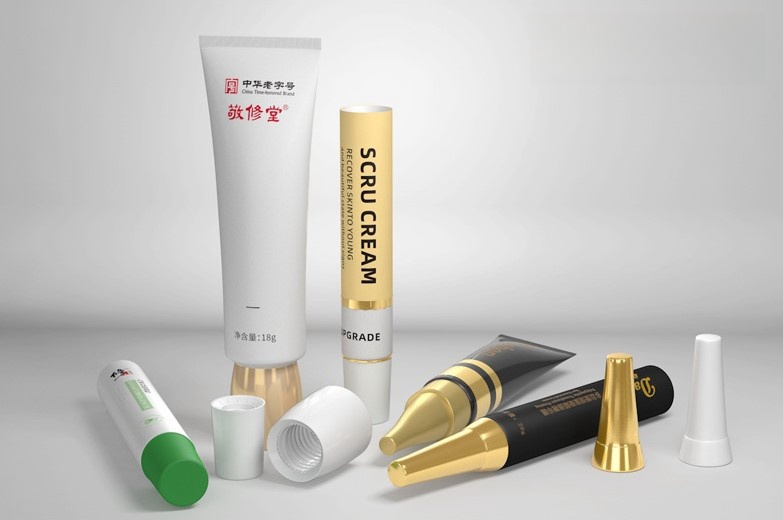
Aluminum-Plastic Tubes: These tubes consist of composite materials with pure aluminum as the barrier layer, offering strong protection against external factors.
PE Extrusion Tubes: These include two-layer co-extrusion tubes and five-layer co-extrusion tubes, which are designed to provide durability and cost-effectiveness.
All-Plastic Composite Tubes: These tubes are made with multiple layers (ranging from 2 to 7 layers), often featuring an EVOH barrier layer, offering enhanced protection and a superior surface printing effect compared to standard PE tubes.
High-Brightness Composite Tubes: These tubes generally feature an aluminum barrier layer, followed by laser film and cat's eye film for a high-brightness, laser-effect surface, ideal for premium cosmetic packaging.
Tube Sizes and Specifications
Diameter: Common diameters include 13mm, 16mm, 19mm, 22mm, 25mm, 30mm, 35mm, 38mm, 40mm, 45mm, 50mm, and 60mm.
Tube Length: Tube lengths range from 45mm to 230mm.
Net Content: The tubes can hold from 2ml to 500ml, making them suitable for a wide range of skincare, personal care, and cosmetic products like hand tubes, s, and s.
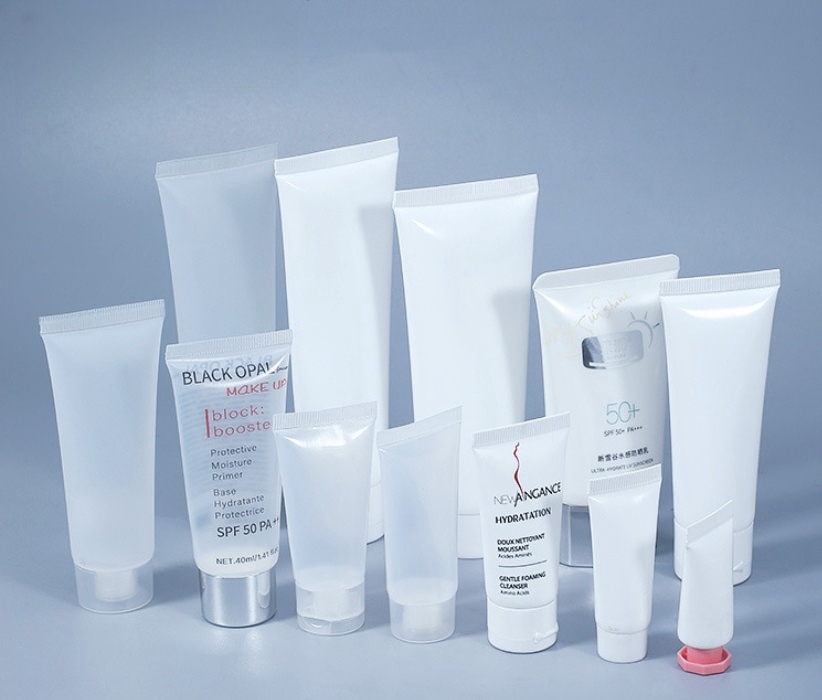
Tubes are generally classified by their production process and structure:
By Production Process:
Sheet Tubes (Composite Tubes): These include aluminum-plastic tubes, all-plastic composite tubes, and high-gloss composite tubes.
Extrusion Tubes: PE extrusion tubes are commonly used for cost-effective, reliable packaging.
By Shape:
Round Tubes: The most common and traditional tube shape for cosmetic packaging.
Oval Tubes: Often used for higher-end cosmetic packaging for a more sleek, modern look.
Flat Tubes: These tubes are gaining popularity for packaging products like skincare creams or cosmetic lotions.
Super Flat Tubes: A more contemporary design, often used for ecofriendly and innovative packaging solutions.
By Color:
Colored Tubes: Used to enhance the product's visual appeal and align with branding.
Transparent Tubes: Provide consumers with a clear view of the product inside, suitable for skincare and cosmetics.
Frosted Tubes: Offer a matte finish, often used for premium skincare products.
Pearlescent Tubes: Used for high-end personal care and cosmetic packaging, giving a shiny, elegant finish.
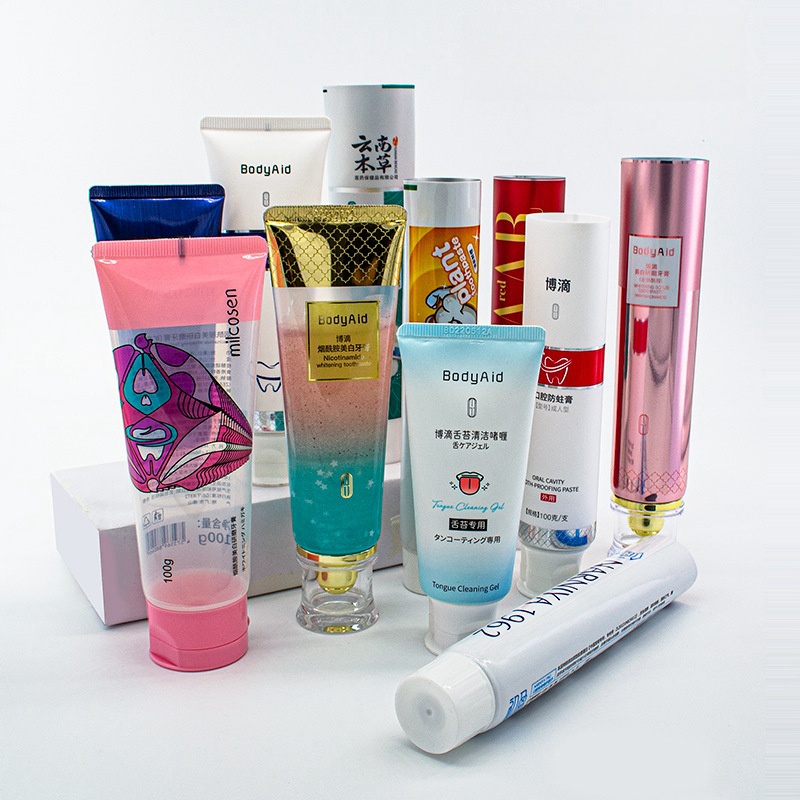
A typical tube consists of several parts, each contributing to the functionality and design of the cosmetic packaging:
Tube Ends: The tube ends come in various styles such as straight, twill, crow's feet, star point, round cut, right-angle cut, and embossed date stamps.
Tube Body: The body can be made from co-extrusion or sheet tubes. These bodies can range from single-layer to multi-layer (up to 7 layers), depending on the barrier properties needed for the product.
Tube Shoulder: The shoulder connects the body to the column head, usually formed via injection molding.
Column Head: This part is molded using an injection molding machine and houses the nozzle or opening.
Sealing Stickers: These stickers are often made from aluminum film or pure plastic film, ensuring the tube is tightly sealed for freshness and product integrity.
Tube Cover: Tubes can be fitted with various covers made from different materials, offering protection and easy dispensing. The cover design and material are important aspects of the overall tube structure.
Extrusion Tubes:
Single-Layer Extrusion: Typically made from PE material (medium or low-grade) for simple applications.
Two-Layer Co-Extrusion: Commonly made from HDPE/LDPE, suitable for most standard cosmetic packaging.
Five-Layer Co-Extrusion: PE/ADMER/EVOH/ADMER/PE, offering superior barrier properties for products that require extended shelf life.
Sheet Tubes:
Five-Layer All-Plastic Tubes: Often made from PE/PE/PA/PE/PE or PE/PE/EVOH15/PE/PE, offering excellent protection and aesthetic qualities.
Seven-Layer Aluminum-Plastic Tubes: PE/PE+EMAA/Aluminum 12/PE+EMAA/PE, ideal for high-end products like premium skincare or cosmetics.
Seven-Layer High-Gloss Tubes: PE/VMPET12+EMAA/EVOH15/PE+EMAA/PE, which provide both enhanced barrier properties and a glossy, high-end look.
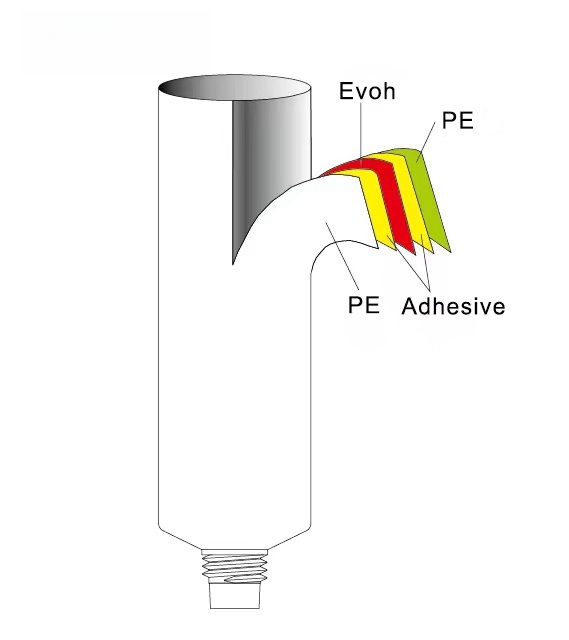
Extrusion Tubes: The process typically involves tube drawing, cutting, injection of the head, offset printing, glazing, bronzing, punching, sealing with stickers, and adding a locking cap.
Sheet Tubes: The production process includes film blowing, slitting, sheet compounding, re-slitting, printing, tube forming, shoulder injection, punching, sealing stickers, and locking caps.
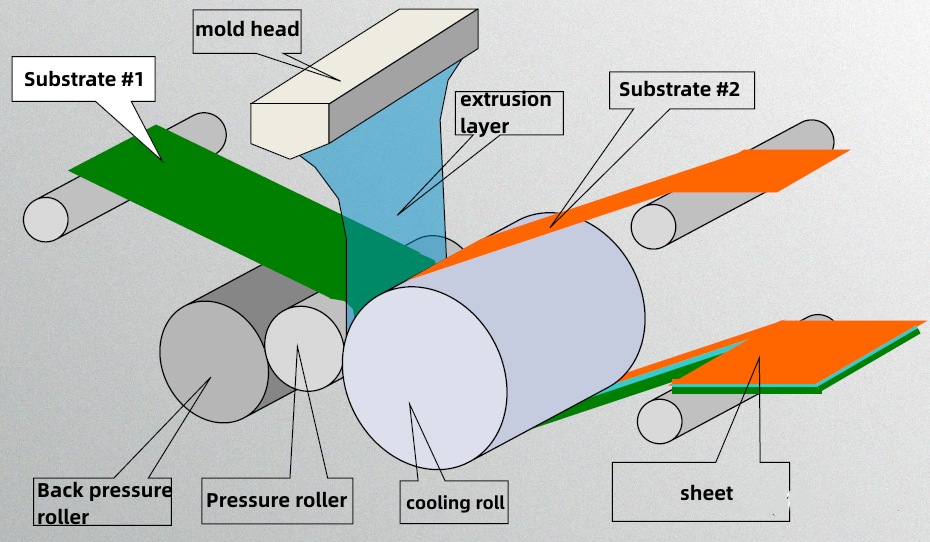
Tubes are a vital part of cosmetic packaging, offering a combination of convenience, durability, and visual appeal for skincare, personal care, and cosmetic products. Whether using PE extrusion tubes, aluminum-plastic composite tubes, or innovative high-gloss composite tubes, selecting the right material is key to ensuring that products are protected, easy to use, and visually striking. With advancements in technology, including multi-layer tube designs and ecofriendly packaging options, cosmetic brands can enhance both the performance and sustainability of their packaging solutions.





